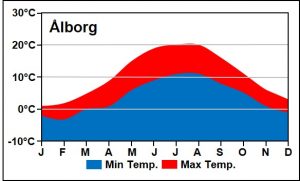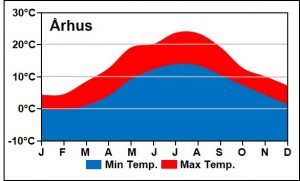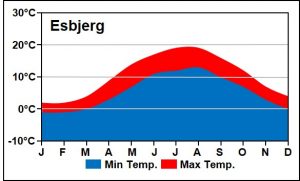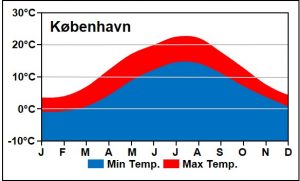Excluding Greenland, Denmark covers around 43,000 km², making it a little (8%) smaller than Vermont and New Hampshire combined. Besides the Jutland peninsula, “mainland” Denmark really consists of over 400 islands, of which less than 70 have permanent settlements on them. The Northernmost point at Skagen Nordstrand (57°45.137’N) and the Southernmost point at Gedser Odde (54°33.540’N) place Denmark into roughly the same latitudes as the Alaskan Panhandle, where Juneau lies ~180 miles further North relative to Copenhagen.
| The climate of Denmark is tempered by being nearly completely surrounded by ocean water masses, which warm the winters, and cool the summers. With average summertime temperatures hovering around 65°F and maxima typically constrained to the lower 70s, the Danes rarely leave home without a sweater regardless of the season. With comparatively mild, nearly snow-free winters (avg 6inches), and plenty of evaporative (oceans!) moisture in the summer, it is always a good idea to accompany lightweight summer clothes with good raingear and/or a windproof umbrella. |     |
Overall, Denmark’s climate is classified by the Köppen-Geiger Classification as an “oceanic or maritime mild winter” climate or Cfb. If you are from the coastal environments of the Pacific Northwest, you will feel right at home in the Danish summer.
All climate graphs above based on data from weather-and-climate.com
